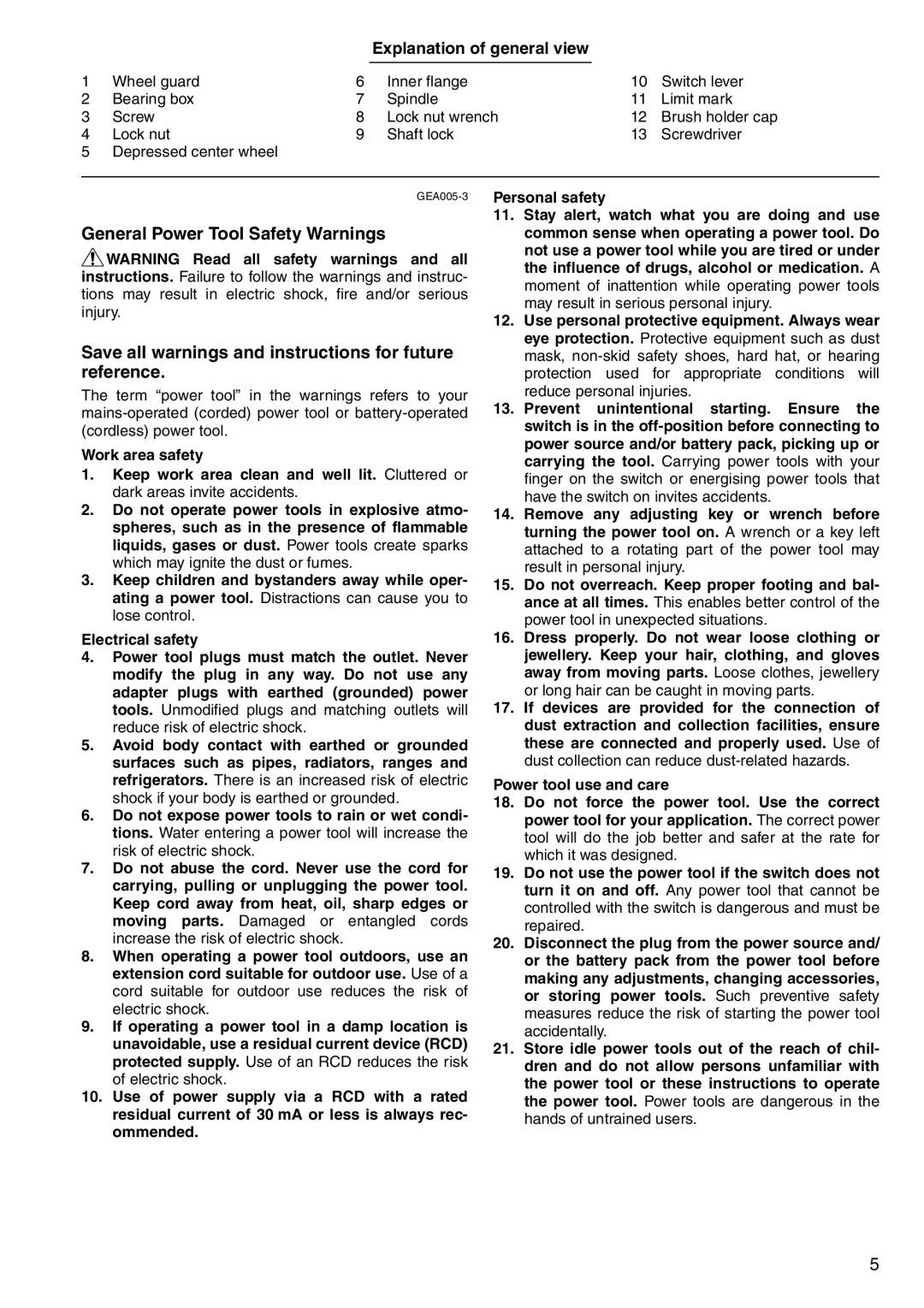9522NB, 9521NB specifications
The Makita 9521NB and 9522NB are versatile tools designed for professionals and DIY enthusiasts alike, showcasing impressive features and technologies that enhance productivity and efficiency. These models are part of Makita's extensive lineup of power tools, known for their reliability and innovative engineering.The Makita 9521NB is a high-performance angle grinder that boasts a powerful 720-watt motor. This robust motor delivers a no-load speed of 11,000 RPM, making it suitable for various grinding and cutting applications. The device is equipped with a durable 125mm (5-inch) diameter grinding disc, ensuring effective material removal while maintaining operator comfort.
On the other hand, the Makita 9522NB offers slightly enhanced capabilities, featuring a 1,000-watt motor that provides a no-load speed of 12,000 RPM. This additional power makes the 9522NB ideal for more demanding tasks, such as heavy-duty grinding and polishing. Both models are designed with ergonomic handles that facilitate a firm grip, reducing operator fatigue during extended use.
One of the standout technologies in these grinders is the labyrinth construction, which protects essential components from dust and debris, ensuring a longer lifespan for the tool. Additionally, both models feature an adjustable protective guard that enhances safety during operation by preventing accidental contact with the grinding disc. The guard can be easily repositioned, allowing users to tailor the tool’s settings for specific tasks.
The 9521NB and 9522NB are engineered with a spindle lock for quick and easy disc changes, significantly reducing downtime. The inclusion of an efficient cooling system also helps prevent overheating, enabling users to work continuously without concerns about performance degradation.
Furthermore, Makita’s commitment to safety is evident in these models through features such as the soft start function, which reduces the kickback during startup and minimizes potential injury. This makes the tools easier to handle, particularly for less experienced users.
In conclusion, the Makita 9521NB and 9522NB are powerful and efficient angle grinders suitable for a wide range of applications. With their durable construction, user-friendly design, and advanced features, they represent a valuable addition to any workshop, ensuring both precision and safety in every grinding or polishing task.

